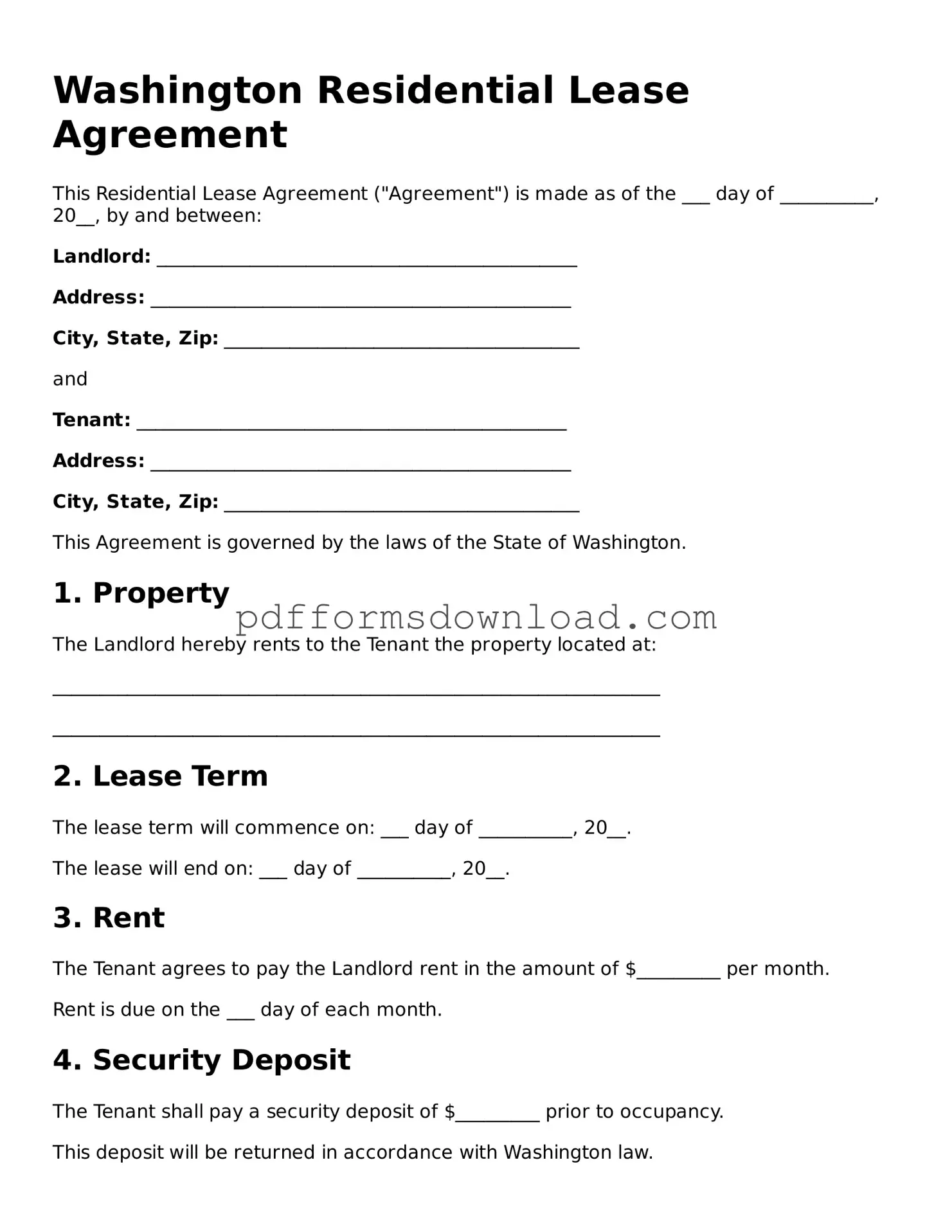What is a Washington Residential Lease Agreement?
A Washington Residential Lease Agreement is a legal document that outlines the terms and conditions between a landlord and tenant for renting a residential property in Washington State. It covers important aspects like rent amount, duration of the lease, and responsibilities of both parties.
What should be included in the lease agreement?
The lease agreement should include the names of the landlord and tenant, property address, lease term, rent amount, security deposit details, maintenance responsibilities, and rules regarding pets and guests. It’s essential to be clear about each party's obligations to avoid misunderstandings.
How long does a typical lease last?
Most residential leases in Washington last for one year, but they can also be month-to-month or for shorter or longer durations. The specific term should be clearly stated in the lease agreement. Always consider your living situation and future plans when choosing the length of the lease.
Can a landlord increase the rent during the lease term?
Generally, a landlord cannot increase the rent during the lease term unless the lease specifically allows for it. For month-to-month leases, landlords must provide at least 30 days' notice before increasing the rent. It’s important to read the lease carefully to understand any potential rent increase clauses.
What happens if a tenant wants to break the lease early?
If a tenant needs to break the lease early, they should review the lease for any early termination clauses. Often, tenants may be required to pay a penalty or forfeit their security deposit. Communication with the landlord is crucial, as they may be willing to negotiate a solution.
What is a security deposit, and how is it handled?
A security deposit is a sum of money paid by the tenant to cover potential damages or unpaid rent. In Washington, landlords can charge up to one month's rent as a security deposit. After the lease ends, landlords must return the deposit within 21 days, minus any deductions for damages or unpaid rent, along with an itemized list of those deductions.
Are there any specific laws governing residential leases in Washington?
Yes, Washington has specific laws that govern residential leases. These laws cover various topics, including security deposits, eviction processes, and tenant rights. Familiarizing yourself with these laws can help protect your rights as a tenant or landlord.
Can a landlord evict a tenant without a reason?
In Washington, landlords cannot evict tenants without a valid reason, especially during the lease term. Reasons for eviction can include non-payment of rent, lease violations, or illegal activities. Proper legal procedures must be followed, and tenants have the right to contest an eviction in court.
What should I do if I have a dispute with my landlord?
If you have a dispute with your landlord, the first step is to communicate directly with them to try to resolve the issue. If that doesn’t work, consider seeking mediation or legal advice. Keeping records of all communications and agreements can be helpful if the dispute escalates.
